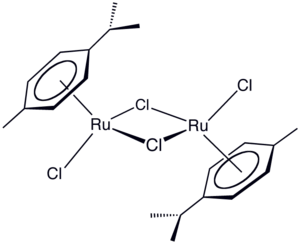Martin A. Bennett facts for kids
Quick facts for kids
Martin A. Bennett
FRS
|
|
|---|---|
| Education | Imperial College |
| Employer | Australian National University |
Martin Arthur Bennett FRS is an Australian inorganic chemist. He is well-known for his studies on how different chemicals, like tertiary phosphines, olefins, and acetylenes, interact. His research helped us understand how these interactions relate to homogeneous catalysis, which is a way to speed up chemical reactions.
Contents
Early Life and Studies
Martin Arthur Bennett was born in London, England. He went to The Haberdashers' Aske's Boys' School. Later, he studied at Imperial College, where he earned his PhD. His supervisor there was a very famous chemist named Geoffrey Wilkinson.
After his PhD, Bennett continued his research in London. He worked at University College, first with Ronald Nyholm and then with Arthur Adamson. During this time, he created an important chemical compound called [RhCl(PPh3)3]. Today, this compound is known as Wilkinson's catalyst. It is widely used in chemistry to help make other chemicals.
In the 1960s, Martin Bennett moved to Australia. He took a job at the Research School of Chemistry at the Australian National University in Canberra.
Important Chemical Discoveries
At the Australian National University (ANU), Professor Bennett focused on different areas of organometallic chemistry. This field studies compounds that contain bonds between a metal and carbon atoms.
Working with Iridium
One of his key projects was to expand on the work he started in London. He looked at an analogue (a similar version) of Wilkinson's catalyst, but using the metal iridium instead of rhodium. While Wilkinson's catalyst is fairly easy to make, the iridium version was much harder.
Professor Bennett found a new way to make the iridium analogue. He used a special iridium compound called [(η4-1,5-cod)Ir(μ-Cl)]2. He mixed it with a chemical called triphenylphosphine. This method successfully created the iridium compound [IrCl(PPh3)3]. This new compound looked very similar to Wilkinson's catalyst. However, it behaved differently, especially when heated. It would change its structure through a process called an insertion reaction.
New Types of Compounds
Professor Bennett was also the first chemist to create compounds with special ring-shaped molecules called cyclooctyne, cycloheptyne, and cyclohexyne. These were exciting new discoveries in chemistry.
He also found rare examples of metal-alkene compounds. These are special because they can exist in two different oxidation states. This means the metal atom can have different electrical charges.
His research group also created a very useful chemical called (cymene)ruthenium dichloride dimer. This chemical is now commonly used in a type of catalysis called "borrowing hydrogen" catalysis. It helps chemists make new molecules more efficiently.


